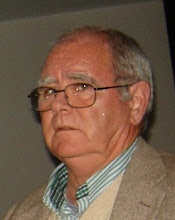by Brooke Winn
March 24, 2015
Che ordered hundreds of executions without trials."We executed many people by firing squad without knowing if they were fully guilty.”
It’s not uncommon to see Che Guevara t-shirts worn proudly across the
world. His portrait is one of the most iconic in history and the most
reproduced image in the history of photography.
In fact, Time Magazine named him one of the 100 most influential people of
the 20th century. He is revered almost as a god in Cuba. School
children start their day by reciting “we will be like Che.”
Unfortunately, many are not educated about the true nature of the Cuban
Revolution, much less Che’s part in it. Despite its claimed goals of liberty
and social justice, the Cuban Revolution was instead marked most of all by
violence and strife. But in typical communist fashion, the regime in Havana has
mixed propaganda and violence to portray a romantic image of this revolutionary
criminal.
1.) He ordered
hundreds of executions without trials.
Forget due process. During the Cuban Revolution, Che condemned to death
many who had never been properly charged or given a lawyer. The New York Times estimated that in the
first two months of the Cuban Revolution, there were approximately 528 firing
squad executions. The Black Book on
Communism cites a total of 14,000 executions by the end of the 1960s.
Che was quoted in 1962 by the editor of the RevolucÍon, Carlos Franqui, as saying “We executed many people
by firing squad without knowing if they were fully guilty. At times, the
Revolution cannot stop to conduct much investigation.”[i]
Dissenters from the new
regime, including unarmed civilians, were not tolerated. Che explained his
approach to justice thus: “We don’t need proof to execute a man. We only need
proof that it’s necessary to execute him.” He made no secret of his disdain for
conventional legal standards, calling evidence and burden of proof “archaic
bourgeois detail(s).”[ii]
In a speech before the United
Nations in December of 1964, Che confirmed his government’s ruthless
reputation, declaring, “Yes, we have executed, we are executing, and we will
continue to execute.”[iii]
2.) He openly despised the United States.
Not only did Che despise the
“imperialists” of the United States, but he also freely stated he wanted to
launch a nuclear war against America.
In 1962, after the resolution
of the Cuban Missile Crisis and the withdrawal of Soviet missiles from Cuba,
Che told London’s Daily Worker,
“If the missiles had remained we would have used them against the very heart of
the United States, including New York. We must never establish a peaceful
coexistence.”
Che believed the only way to
deal with the American “hyena” was through extermination, and that building a
better world required nuclear war.
3.) Hatred and mass murder were at the heart of his
revolution.
Che was a cold-blooded killer
– and he enjoyed it. He said “a relentless hatred” toward the enemy transforms
the men in his army into “an effective, violent, selective, and cold killing
machine.” He even wrote to his own father that, “My nostrils dilate while
savoring the acrid odor of gunpowder and blood…I’d like to confess, Papa, at
that moment I discovered that I really like killing.”
Che was absolutely merciless
when it came to seeing the revolution through, and was willing to countenance
mass murder towards this end. “What we affirm is that we must proceed along the
path of liberation even if this costs millions of atomic victims.”[iv]
4.) There was no room for freedom of speech in his
revolution.
In a truly free society,
people are allowed the freedom of expression. With this freedom of expression
comes freedom of speech, press, and dissent. Che spoke openly with José Pardo
Llada, a Cuban journalist, and told Llada, “We must eliminate all newspapers;
we cannot make a revolution with free press.”[v]
Having an open dialogue about
different opinions was not an option in the “free Cuba.” Che’s fanaticism even
infected his personal relationships—he only made friends with those who were
like-minded: “My friends are friends only so long as they think as I do
politically.”[vi]
5.) He enacted a prison system much like that of
Soviet Russia.
Like Stalin with his Soviet
Gulag camps, Che set up political prisons where hard labor was enforced. These
re-education camps were a way to punish accused counter-revolutionaries,
dissenters, and political opponents. “We send to Guanahacabibes [i.e., Cuban
labor camp] people who have committed crimes against revolutionary morals…it is
hard labor…the working conditions are harsh…”[vii]
Che enacted a prison system much like the Soviet
Gulag.
Included in this criminal
system were ‘delinquents’ or those who were involved with drinking,
disrespecting authority, and being lazy or playing loud music. Homosexuals were
singled out for particularly brutal treatment.[viii] Also included in the
definition of ‘delinquents’ were Catholic priests, Jehovah’s Witnesses, and
other religious persons. In 1959, Fidel Castro appointed Che as the commandant
of a fortress turned prison called La Cabaña in Havana. At one point, between 800
and 1,000 prisoners were housed in the facility when full capacity allowed for
300.[ix]
So before you jump on the pop-culture bandwagon and purchase your Che Guevara
t-shirt and other Che paraphernalia, understand who he was and what he REALLY
stood for: hatred, intolerance, and mass murder.


No hay comentarios:
Publicar un comentario